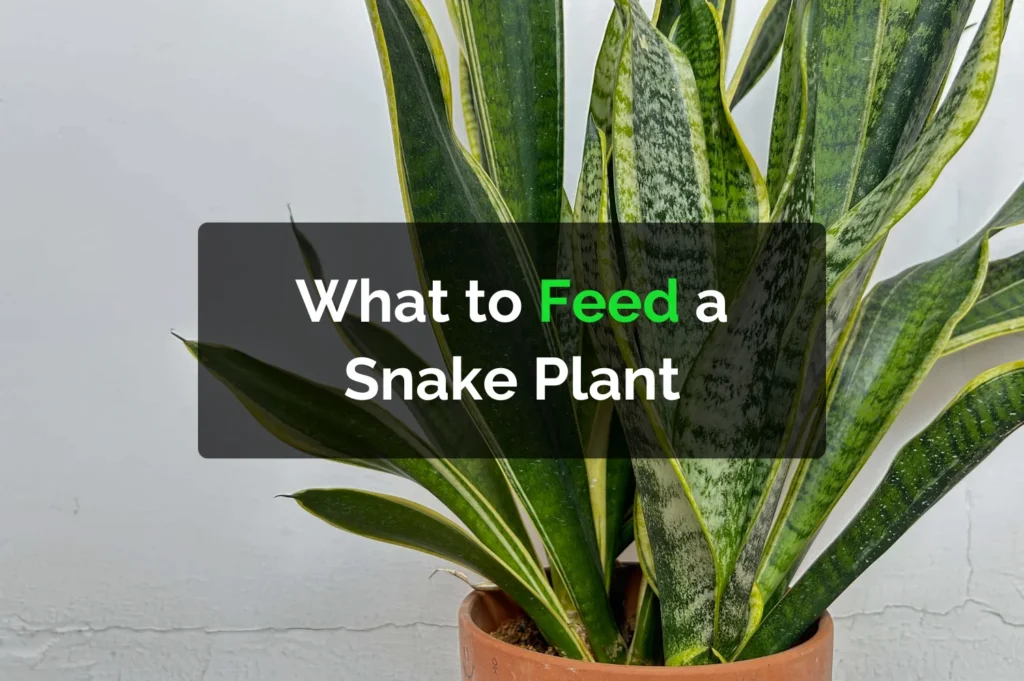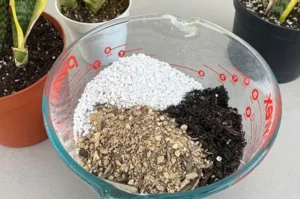Snake plants, also known as Sansevieria or Dracaena trifasciata, are some of the most resilient and beginner-friendly houseplants. Known for their sword-like leaves and air-purifying qualities, they thrive in various conditions with minimal care. However, one aspect of care that often gets overlooked is feeding. Just like any other plant, snake plants benefit from proper nutrition. Knowing what to feed a snake plant can help it grow healthier, look more vibrant, and resist pests and diseases.
In this guide, we’ll explore the best feeding practices for your snake plant, including the types of fertilizers to use, how often to feed, and common mistakes to avoid.
Do Snake Plants Need Fertilizer?
Yes, they do but not as frequently as many other houseplants. Snake plants are slow-growing and naturally adapted to low-nutrient environments. While they can survive without much feeding, a little boost during their growing season can improve their overall health and appearance.
Fertilizing helps your snake plant:
- Grow stronger and greener leaves
- Produce new offshoots
- Maintain resistance to stress and pests
- Recover from damage or slow growth
When is the Best Time to Feed a Snake Plant?
Timing is everything. Snake plants grow most actively in the spring and summer, so that’s the best period to feed them. During fall and winter, they go dormant, and feeding during these cooler months can do more harm than good.
Feeding Schedule:
- Spring to Summer: Once every 4–6 weeks
- Fall to Winter: No feeding required
Feeding your plant when it’s actively growing ensures that the nutrients are absorbed and used effectively.
What Type of Fertilizer is Best?
Snake plants don’t require fancy or high-maintenance feeding regimens. A balanced, all-purpose fertilizer will usually do the trick.
1. Liquid Houseplant Fertilizer
These are easy to dilute in water and apply while watering. Choose a balanced formula, such as 10-10-10 or 20-20-20 (Nitrogen-Phosphorus-Potassium ratio), and use it at half strength to avoid overfeeding.
2. Slow-Release Fertilizer
These fertilizers release nutrients gradually over time. One application can last for several months. This is ideal for people who prefer low-maintenance plant care.
3. Organic Options
If you prefer chemical-free care, organic fertilizers like worm castings, compost tea, or fish emulsion can work well. They feed the soil and improve long-term plant health, though they may act more slowly.
Pro Tip: Avoid high-nitrogen fertilizers. While nitrogen supports leaf growth, too much can lead to soft, floppy leaves or even root burn.
How to Feed a Snake Plant
Feeding a snake plant is simple, but you need to follow the right steps to avoid overfeeding or damaging the roots.
Step-by-Step Feeding Guide:
- Choose the Right Fertilizer: Select a liquid, slow-release, or organic fertilizer suitable for indoor plants.
- Dilute if Necessary: If you’re using a concentrated formula, dilute it to half the recommended strength.
- Water Before Feeding (If Dry): If the soil is bone dry, water the plant first before applying fertilizer. Feeding on dry soil can burn the roots.
- Apply Evenly: Pour the fertilizer solution evenly into the soil, avoiding direct contact with the leaves.
- Wipe Away Spills: Clean any fertilizer that touches the plant’s leaves or pot surface.
Signs Your Snake Plant Needs Feeding
Not sure if your plant needs food? Watch for these signs:
- Slow or no new growth during spring/summer
- Pale or yellowing leaves
- Droopy or weak-looking leaves
- Soil that appears exhausted or depleted
Keep in mind, these symptoms can also result from other issues like poor lighting or overwatering, so rule those out first.
What Happens If You Overfeed a Snake Plant?
Snake plants are sensitive to overfertilization. Giving them too much food can lead to problems such as:
- Root burn
- Leaf tip browning
- Salt buildup in the soil
- Stunted growth
Always follow a “less is more” approach. When in doubt, feed less frequently or use diluted solutions.
Can You Feed Snake Plants With Natural Alternatives?
Absolutely! Here are a few natural alternatives that are gentle and effective:
1. Banana Peel Tea
Soak banana peels in water for 2–3 days and use the water to feed the plant. It’s rich in potassium and phosphorus.
2. Eggshell Powder
Crushed eggshells can be mixed into the topsoil to provide calcium, which helps strengthen cell walls.
3. Used Coffee Grounds
Sprinkle sparingly around the base of the plant or mix with compost. They add a small nitrogen boost.
Note: Always use natural feeds in moderation, and avoid piling them directly against the plant’s roots.
Feeding Snake Plants in Pots vs. Garden Beds
Most people grow snake plants indoors in pots, but if you’re growing them outdoors in warmer climates, feeding needs can vary.
- Potted Plants: Need more regular feeding since nutrients wash out with watering.
- In-ground Plants: May need less frequent feeding, especially if grown in rich, organic soil.
Make sure your outdoor snake plants aren’t exposed to extreme weather and have good drainage.
Final Tips for Feeding Snake Plants
- Stick to feeding during active growth months.
- Always water first if the soil is dry.
- Avoid overfeeding, more isn’t always better.
- Don’t feed newly repotted snake plants for 4–6 weeks.
- Monitor plant health and adjust your feeding schedule as needed.
Conclusion
Feeding a snake plant might seem like a minor part of its care, but the right nutrition can make a big difference in its growth and health. With minimal but mindful feeding, your snake plant will reward you with upright, glossy leaves and vibrant color year-round.
Remember, snake plants are survivors. They don’t need constant attention, but the occasional meal will keep them looking their best. Stick to natural rhythms, use the right fertilizer, and you’ll have a thriving plant for years to come.






